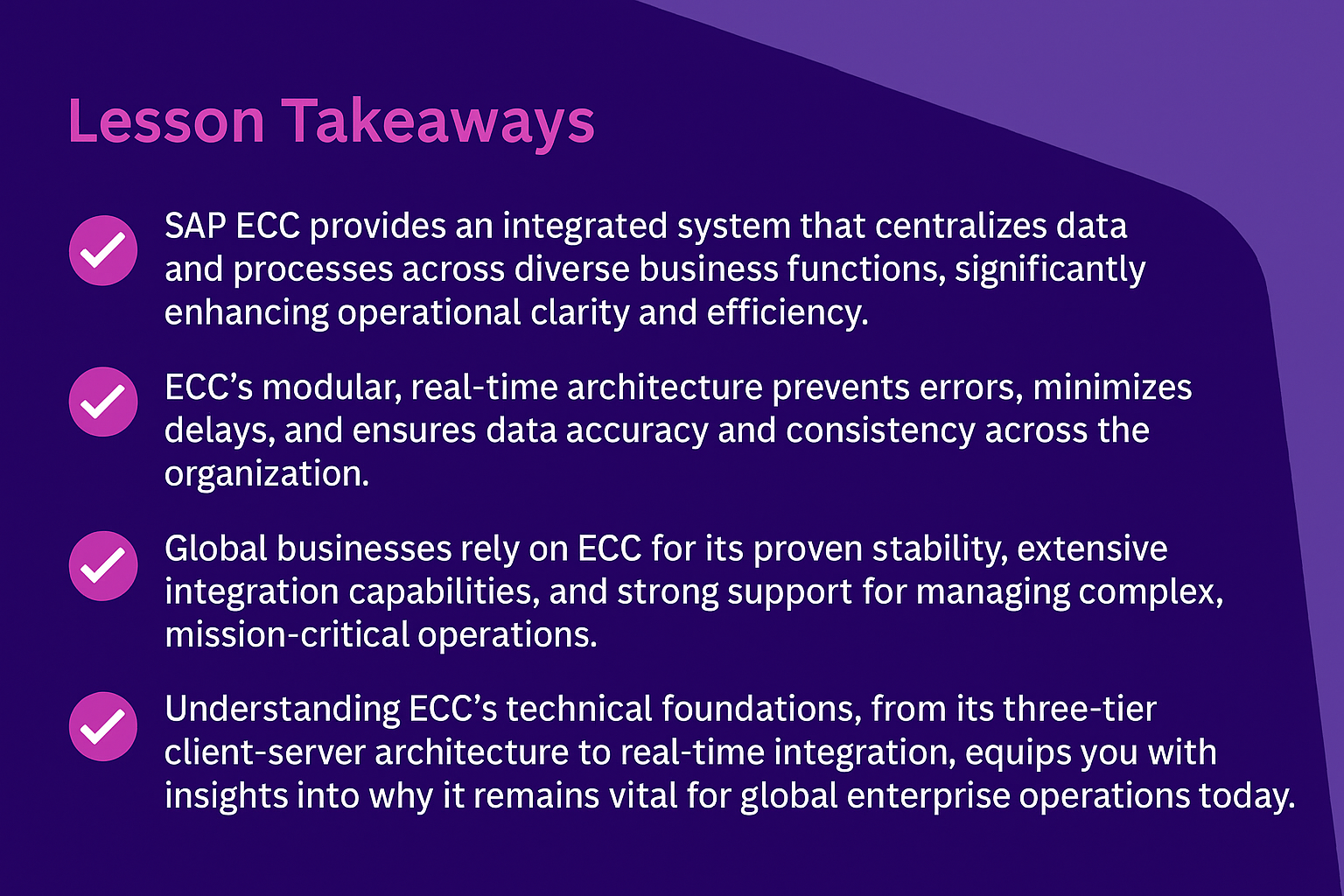Lesson Title: Understanding SAP ERP Central Component (ECC)
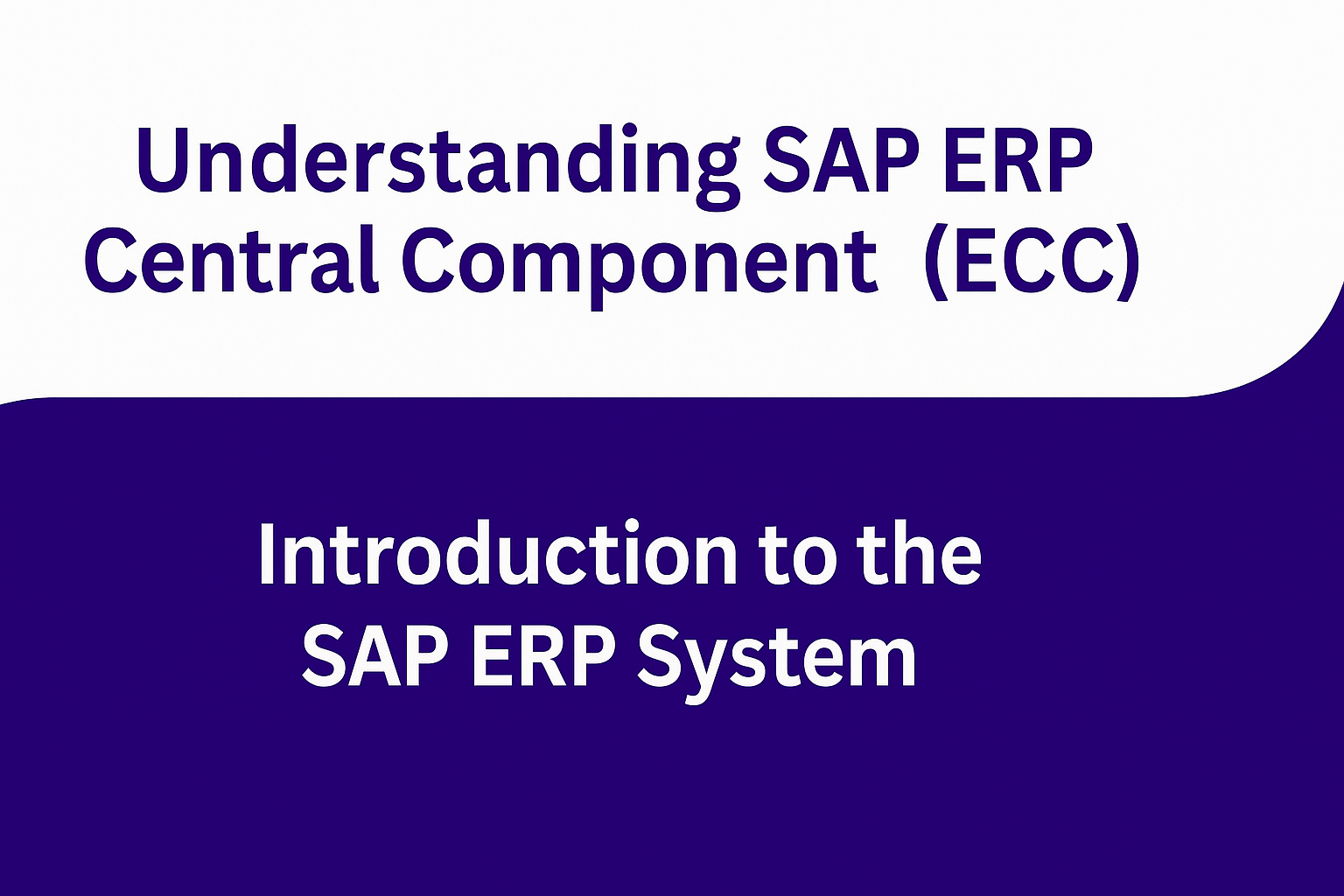
Lesson Description:
In this detailed lesson, you’ll delve into SAP ERP Central Component (ECC)—a widely utilized ERP system powering countless global businesses. You’ll understand clearly how ECC integrates various essential business operations, provides real-time data visibility, and why organizations like PepsiCo rely heavily on this software to manage their complex business processes seamlessly and efficiently.
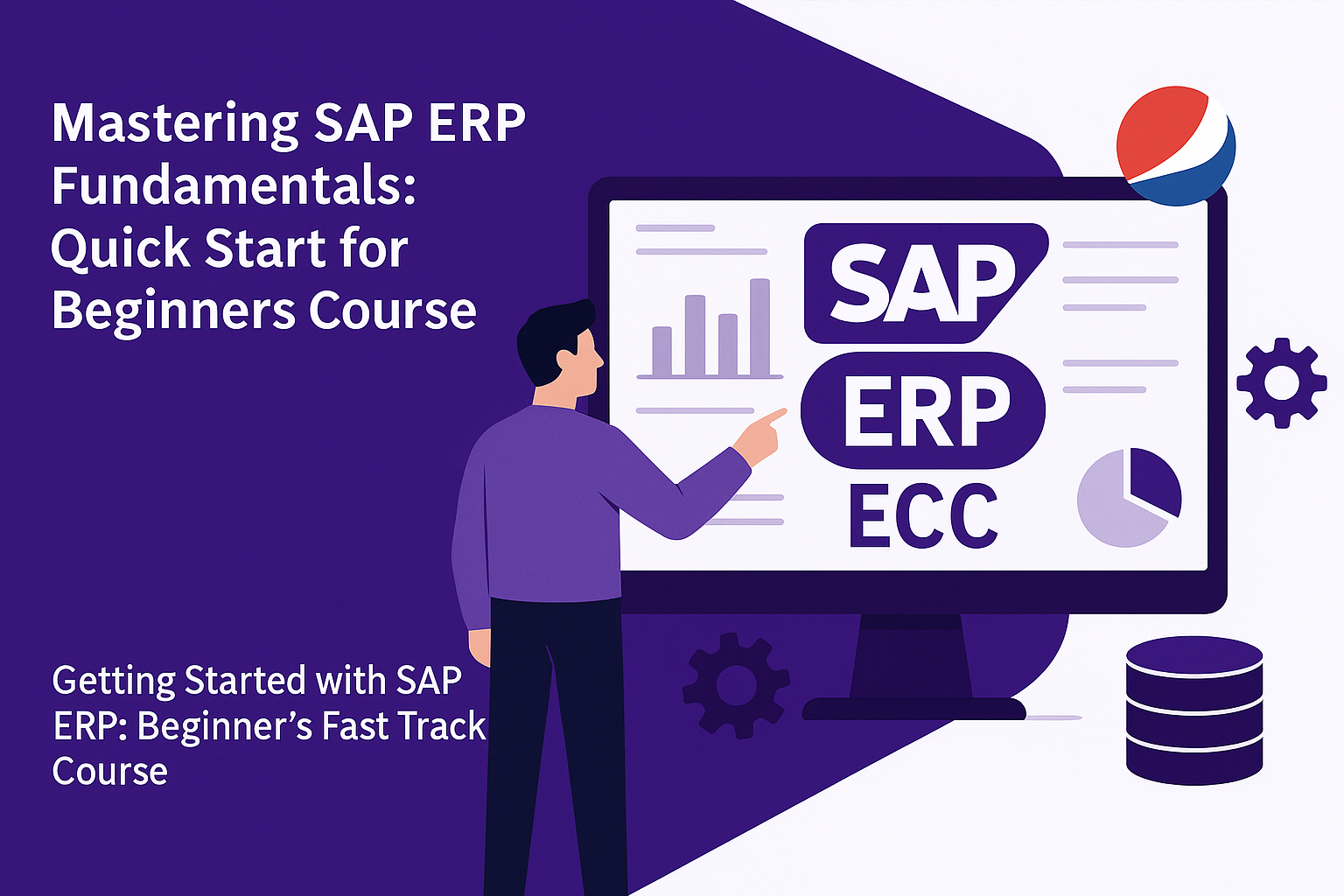
Lesson Learning Objectives:
-
Clearly define SAP ECC and explain its core functions.
-
Understand the modular architecture and integration capabilities of SAP ECC.
-
Recognize why global companies choose ECC to manage their core business processes effectively.
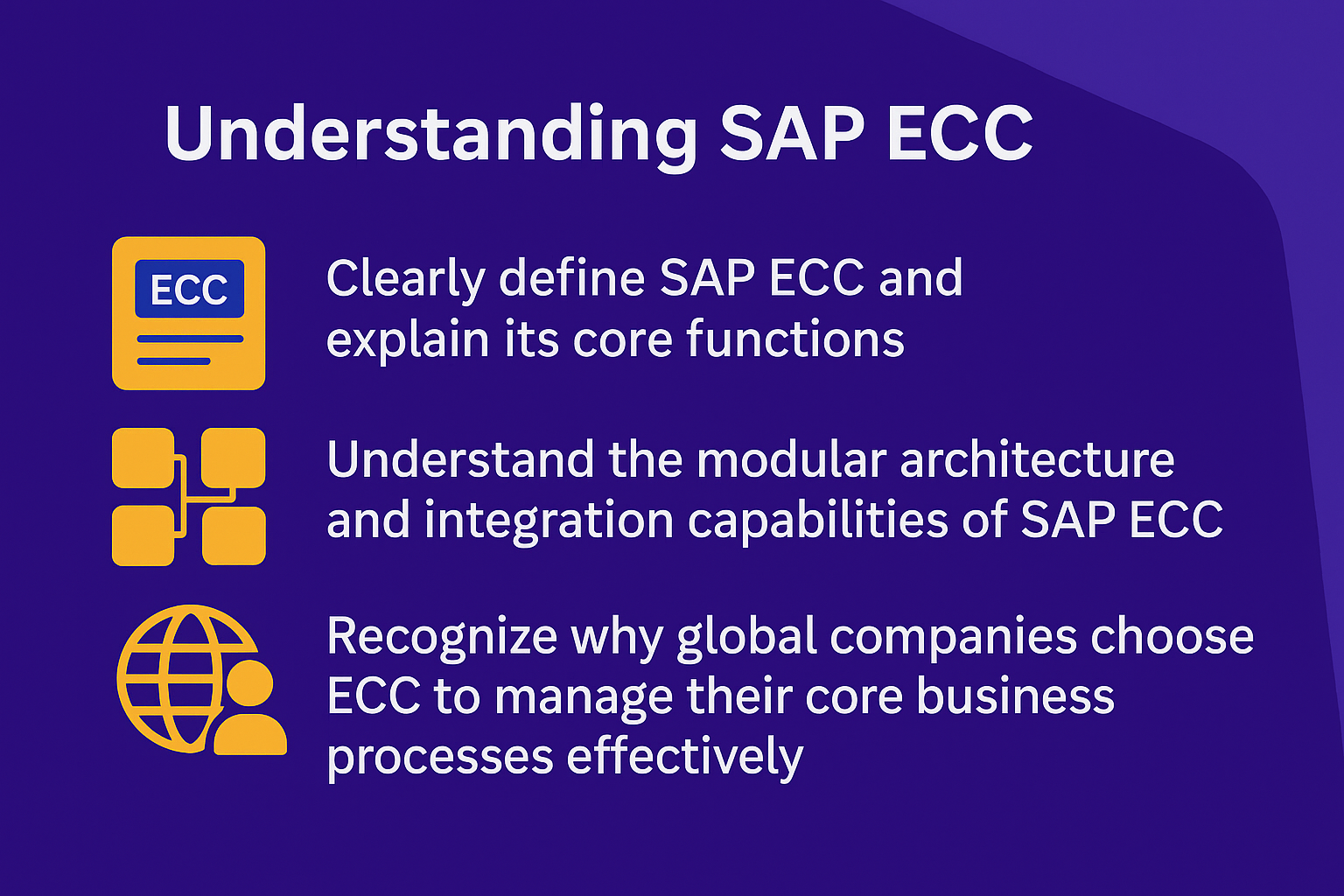
Terminology:
-
SAP ECC (ERP Central Component): The integrated ERP software suite from SAP, serving as the central operational backbone for enterprises.
-
Modular Architecture: Structure where various specialized modules (e.g., finance, production) integrate into a single cohesive system.
-
Real-time Integration: Instantaneous sharing and updating of data across various business modules without delay.
-
Three-tier Architecture: SAP’s technical architecture consisting of a database layer, an application layer (processing logic), and a presentation layer (user interface).
-
RDBMS (Relational Database Management System): Database management system where data is structured into interrelated tables for efficient management.
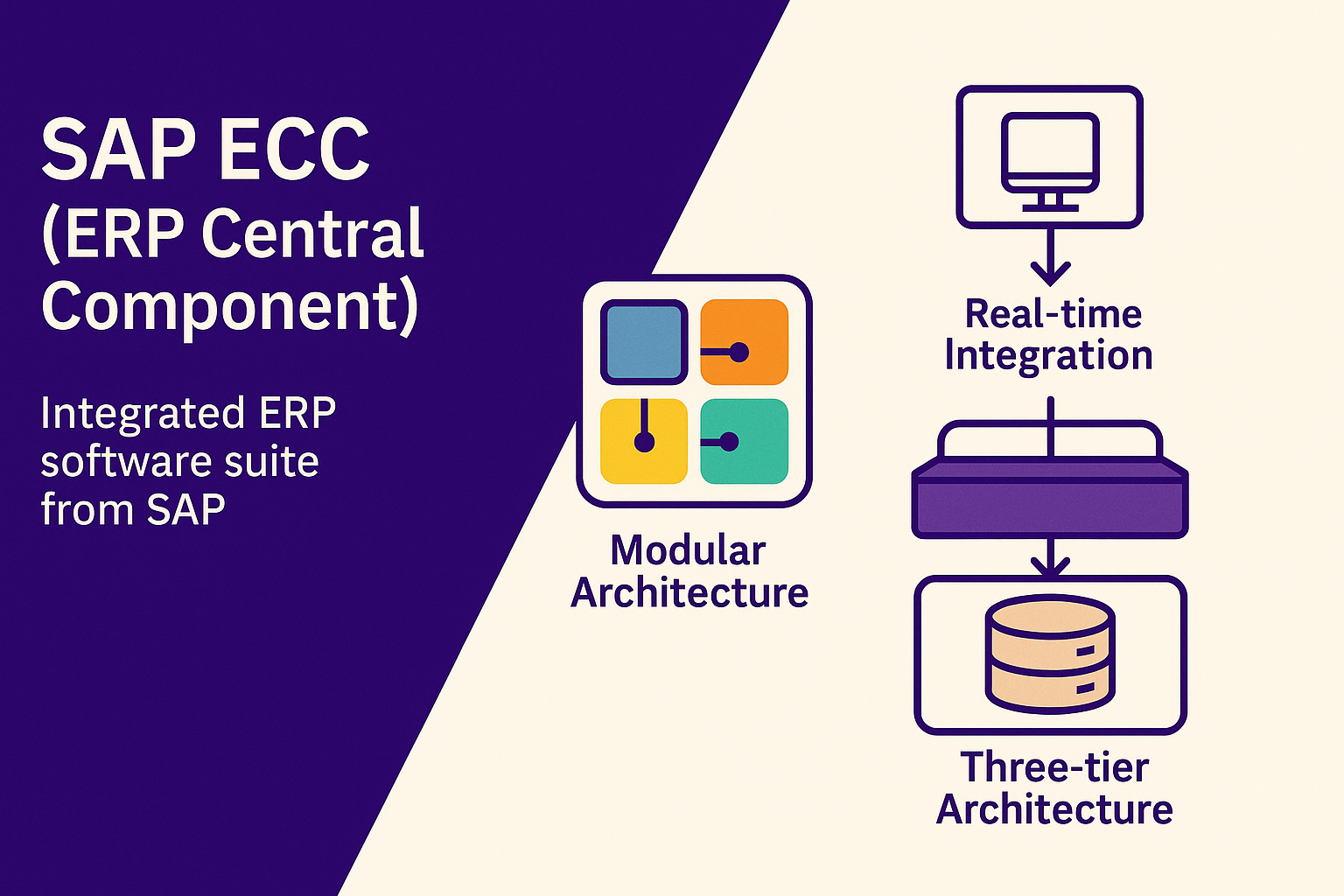
Lesson Key Points:
✅ What is SAP ECC?
SAP ECC, or ERP Central Component, is SAP’s enterprise resource planning system designed specifically for on-premises implementation. ECC centralizes and integrates all critical business operations, such as finance, sales, inventory, human resources, procurement, and manufacturing into one unified system. At its core, ECC maintains a single database, ensuring that data entered once is instantly accessible to all relevant areas in real-time. This immediate accessibility drastically reduces redundancy, improves accuracy, and enhances decision-making speed across the entire organization.
✅ How SAP ECC Works:
ECC’s effectiveness stems from its integrated modular architecture. Unlike traditional setups where departments function in isolated systems, SAP ECC modules such as financial accounting (FI), materials management (MM), sales and distribution (SD), and production planning (PP) are seamlessly connected. Actions performed in one module automatically update data in others without manual intervention. For example, when a sales team logs a customer order, the inventory module instantly verifies stock availability, triggering production or procurement actions automatically if necessary. Simultaneously, finance receives updated transaction details, ensuring financial records remain consistently accurate.
✅ Technical Architecture of SAP ECC:
ECC operates on SAP’s classic three-tier client-server architecture inherited from its successful predecessor, SAP R3. This structure consists of:
-
Database Layer: Stores comprehensive business data centrally in a relational database, maintaining data integrity and consistency.
-
Application Layer: Handles core processing logic using SAP’s proprietary ABAP servers. This layer is the ‘brain’ of ECC, orchestrating transactions and workflows.
-
Presentation Layer: Provides user interfaces like SAP GUI or web-based portals, enabling seamless interaction by users across various business roles.
The robust design ensures hundreds or even thousands of users can simultaneously interact with ECC without compromising data consistency or system performance.
✅ Why Businesses Choose SAP ECC:
Companies, especially those with complex global operations like PepsiCo, select ECC primarily for its ability to eliminate data silos and provide instant, accurate information across all business units. PepsiCo standardized its operations globally with SAP ECC to integrate diverse business divisions—from snacks (Frito-Lay) to beverages (Tropicana, Gatorade)—onto one coherent platform, streamlining processes and improving operational transparency significantly.
Key business benefits of ECC include:
-
Unified Data Source: Everyone accesses identical, updated data, greatly reducing confusion and errors caused by discrepancies between departments.
-
Operational Efficiency: Automation of repetitive tasks such as inventory updates, order processing, and financial postings reduces manual work and accelerates workflows.
-
Enhanced Compliance and Reduced Errors: Standardized processes in ECC minimize data inaccuracies and simplify adherence to regulatory and internal control measures.
-
Improved Collaboration: Real-time data visibility across departments naturally fosters improved cross-functional collaboration, helping teams respond swiftly and cohesively to business changes.
-
Data-driven Decision Making: Instant access to detailed analytics and reports enables agile, informed decisions, crucial for dynamic market conditions, especially important for industries like consumer goods, where rapid adaptation is key.
✅ Evolution and Positioning of ECC in SAP’s History:
SAP ECC represents an evolution of SAP’s previous ERP solution, SAP R3, maintaining the core strengths of modularity and three-tier architecture while enhancing capabilities like web-based interfaces, broader integration options, and flexibility. Introduced in 2004, ECC expanded to serve as the core of SAP’s broader business suite, integrating with modules for customer and supplier relationship management (CRM and SRM) and supply chain management (SCM). This positioned ECC not only as a standalone ERP solution but also as the central hub connecting various specialized business solutions.
As the predecessor to SAP’s latest system, S/4HANA, ECC continues to be widely used and supported, illustrating its reliability and capability to handle complex, high-volume global operations. It remains the backbone of numerous businesses due to its proven stability and extensive functionality.

Lesson Summary:
You’ve gained comprehensive insights into SAP ECC’s role as a highly integrated, modular ERP system. ECC effectively breaks down data silos, enhances operational efficiency, and provides a unified real-time database. Organizations like PepsiCo leverage ECC precisely because it integrates their complex global operations seamlessly, facilitating data-driven decisions, improving collaboration, and optimizing business processes in real-time.
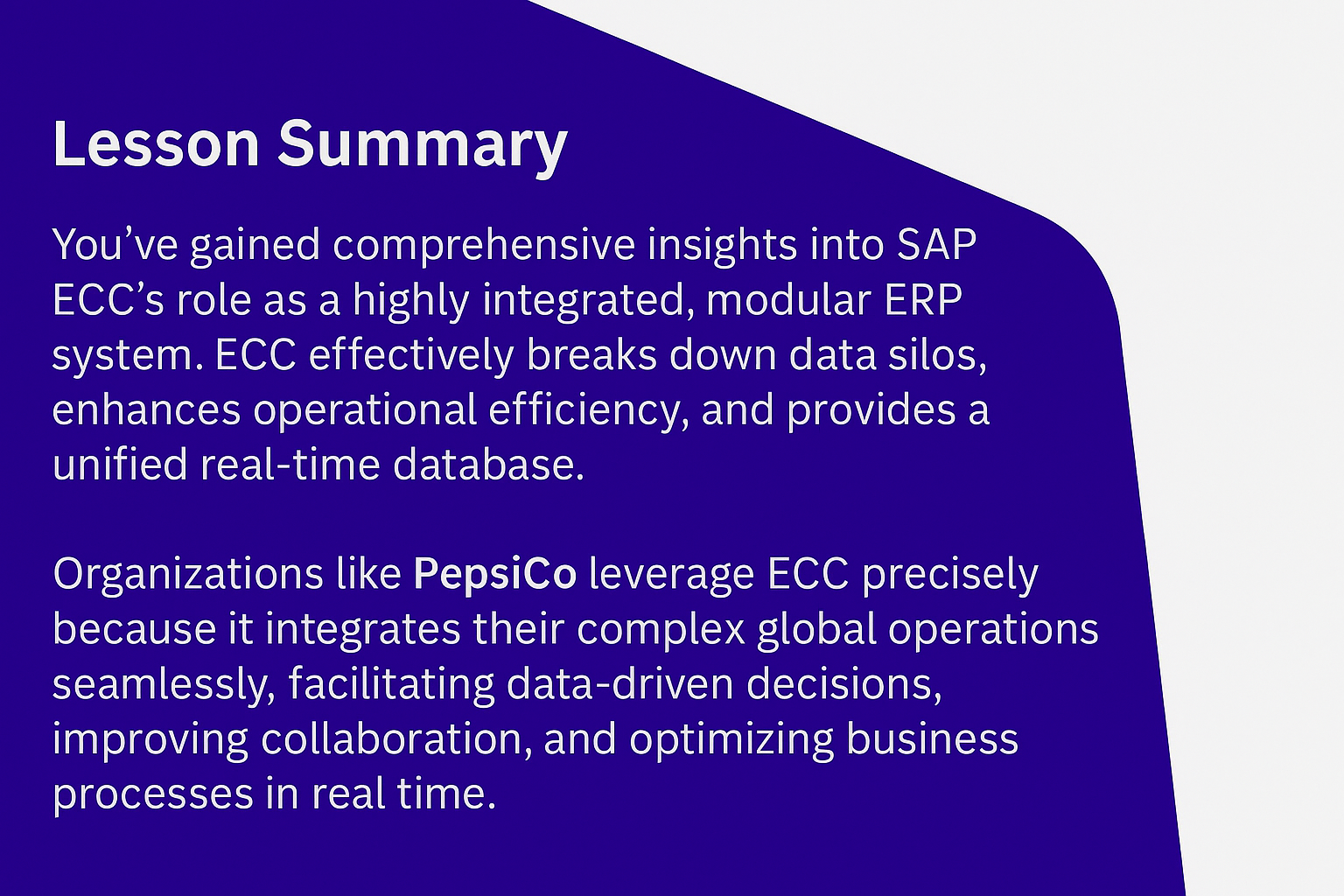
Lesson Takeaways:
-
SAP ECC provides an integrated system that centralizes data and processes across diverse business functions, significantly enhancing operational clarity and efficiency.
-
ECC’s modular, real-time architecture prevents errors, minimizes delays, and ensures data accuracy and consistency across the organization.
-
Global businesses rely on ECC for its proven stability, extensive integration capabilities, and strong support for managing complex, mission-critical operations.
-
Understanding ECC’s technical foundations, from its three-tier client-server architecture to real-time integration, equips you with insights into why it remains vital for global enterprise operations today.
